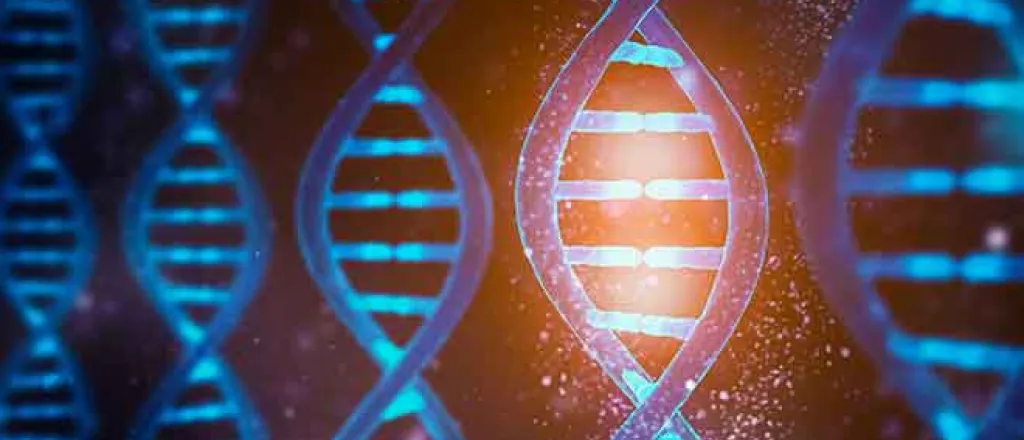
Children are 'wiggly' and that's a problem for cancer treatment
(The Center Square) - A team at Sandia National Laboratories recently developed a patch to prevent damage to healthy tissue during proton radiotherapy, a tool used to target certain cancerous tumors.
“This is an important need, especially among pediatric patients,” Patrick Doty, one of the creators of the patch, said.
Proton radiation therapy sends a high dose of radiation into a specific area to disrupt and destroy tumor cells in the body. However, the radiation also kills nearby healthy cells. Precision is key when targeting the radiation, but movement, especially from children, is a problem.
“If you breathe, you move. When your heart beats, you move. You can’t stop those types of motions. And kids are wiggly. You can’t keep them still for long,” Doty said. “Sometimes doctors must resort to general anesthesia, and the treatments sometimes go day after day for six weeks. Imagine going to the hospital and having to be put under every day for weeks. That is not good for anyone, but it’s especially bad for kids.”
Doty and fellow materials scientist Isaac Aviña found a solution. They developed an imaging patch to improve the precision of the procedure.
Existing systems use cameras to prompt the radiation to stop when they sense movement. However, they cannot sense how much radiation was misplaced or at what dosage.
Aviña and Doty said the patch they developed, an Electronic Polymer Dosimeter for Radiotherapy, can do it.
“You can think of this patch as electronic film,” Doty said in the release. “The idea is to print an array of sensor elements on the patch, and each element or pixel gives location and intensity information. In that way, it records an image of the dose delivered.”
At first, the team focused on pediatric cancer treatment, but it quickly found the patch may have use in treating other cancers.
“Proton radiotherapy is the gold standard for treating certain cancers, but there are problems with targeting it, especially in small areas like in prostate cancer and brain cancer, and now we have a solution,” Aviña said in the release.
Doty said brain cancer is another place where this technology can be helpful.
“There are certain tissues at risk that you don’t want to destroy, including those in the brain,” Doty said. “You can lose hearing because of collateral damage, or you can hit nerves or other vital tissues, so they use physical restraints. For brain cancer patients, they literally nail a device that fits over your head to a hard bench, so your head is completely still. Imagine how traumatic that is.”
Aviña and Doty got the idea for this technology from their nuclear detection work at Sandia. The patch's main component is a neutron/proton sensor patented by Sandia, according to a press release.
“It had not been used anywhere else,” Aviña said. “It was invented here and was designed for detecting signatures from nuclear materials. We wanted to see if we could use it for other applications, including cancer therapy, knowing cancer therapy has the same signatures.”
The Sandia team paired the sensor with a polymer and electrodes and attached them to a layered material with a bandage-like appearance. It then added adhesive.
"They say that the polymer, known more commonly as a plastic or resin, is ionized after the proton interacts with it," the release explained. "The electrodes then feed the charge back to an amplifier, detecting the beam intensity and precise location in real-time. That stops the radiation if the beam is off target and records the information to determine which tissues the radiation penetrated and at what levels."
The addition of artificial intelligence and machine learning tools to the technology could lead to more advanced algorithms for treatments, the release said.
The sensor could provide more accurate beam profiles to better differentiate between healthy and cancerous tissue by analyzing data gathered by the patch.
"This can further enhance the efficacy of the treatment and prevent excessive radiation treatments," the release said.
Aviña’s father is battling cancer, making this mission personal for the team.
“I wanted to find a way to help this whole process and wanted to contribute but didn’t know how,” Aviña said. “This became especially true while I was researching and talking with the clinics and learned what children have to undergo during these cancer treatments. I realized there was a gaping need in this field of oncology, and I wanted to help.”
Doty has worked on radiation detection for over 20 years and has been looking for a new way to use the technology.
“To be able to talk to doctors, who use this every day in the field and find out what their real needs are, we realized just how important this was,” Doty said.
The team hopes to commercialize its patch and is presenting the technology to various entrepreneurs.
Additionally, the team says there is interest in testing the technology in situations more similar to real life, and some cancer centers have that capacity.
“I was talking to a doctor from one oncology department, and he asked me if I could send it over immediately,” Aviña said. “He didn’t care about the cost. He didn’t realize that we don’t have any product on hand to share but the urgency was clear. He wanted it not tomorrow but yesterday.”
The team hopes its innovations will soon better the lives of cancer patients.
“For years, we knew that we had a very cool material that did things that nothing else could,” Aviña said. “We wanted to help in another area. We realized that is in cancer therapy.”

















